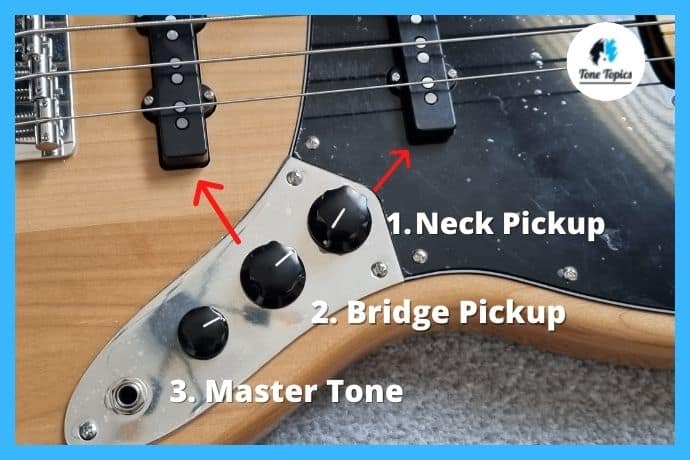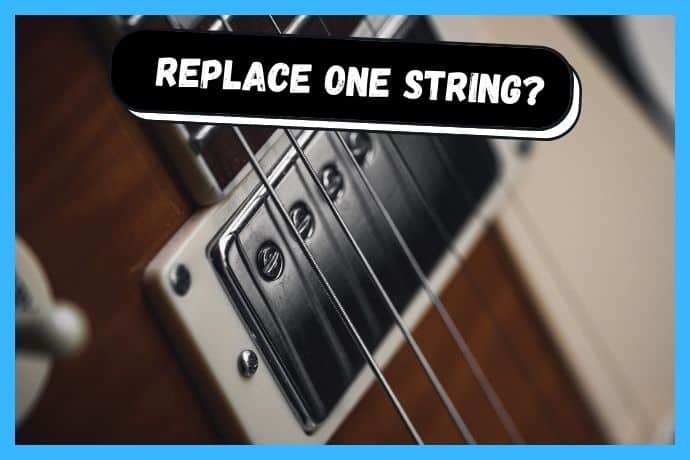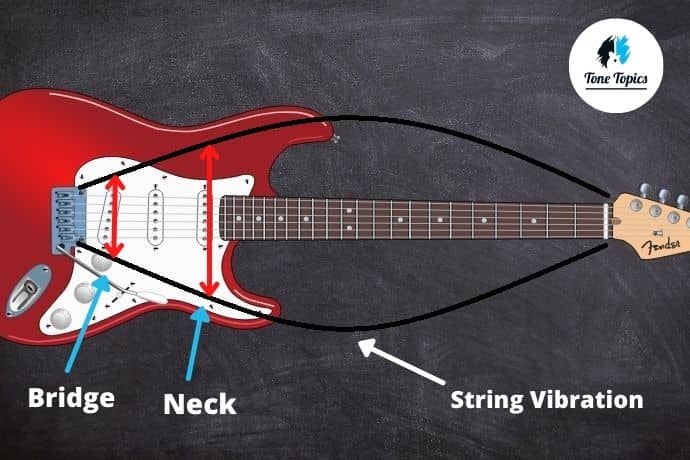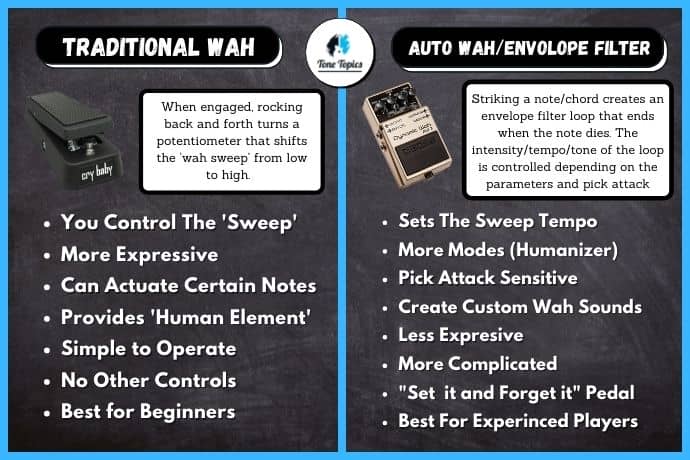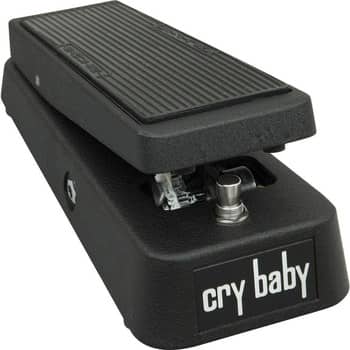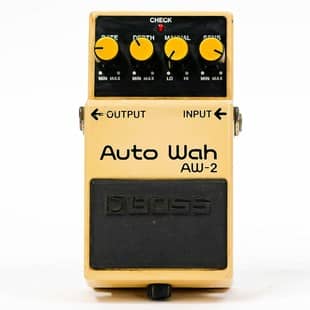Guitarists have played proverbial volleyball with the term ‘pedal platform amp’ for quite some time. But what exactly is a pedal platform amp? Look no further!
This ultimate guide is your resource to pedal platform amps. You will learn everything, including their characteristics, function, pros, cons, and the top reasons to diverge towards one.
Let’s get started with a quick answer…
What is a Pedal Platform Amp?
A Pedal platform amp is a term used to describe a guitar amplifier that optimally responds to guitar pedals – especially gain-based pedals. Therefore, a pedal platform amp functions as a platform to build a guitar tone around stompbox pedals, relying less on the amp’s natural distortion and effects.
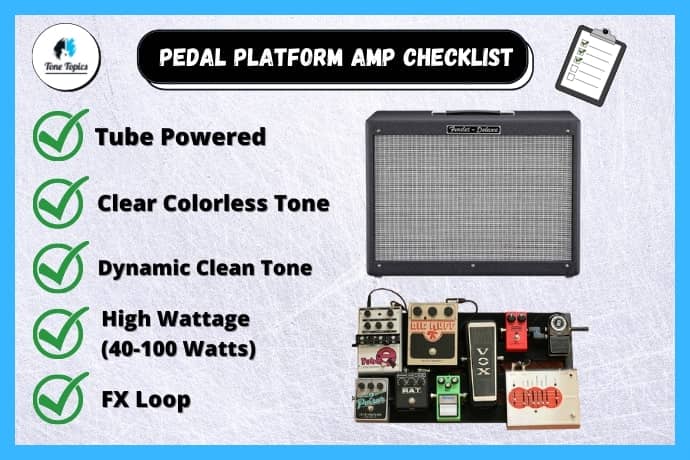
First, it’s helpful to know that ‘pedal platform amps’ are not a new innovative type of amp technology.
It’s actually a ‘term’ recently coined by players to describe an amp (new & old) as the perfect platform to craft a unique sound using stompbox pedals.
As stompbox pedals are excitingly evolving and becoming a firm staple in rig setups, it makes sense to know if an amplifier takes pedals well; hence the term ‘pedal platform’ was born.
In a way, a pedal platform amp functions similar to a PA system – projects the sound of your pedalboard. Rely less on the amp’s natural tone and distortion and more on your pedals to supply your custom sound.
This serves as having your perfect rig at your feet rather than relying on your amp’s natural distortion and effects.
But what characteristics make an ideal pedal platform?
The perfect pedal platform amp is typically valve-powered with a near-colorless tone. These two specific attributes function as a blank slate to add your desired color and flavors using pedals.
As tube/valve amps specifically react super well to pedals, it highlights their dynamics and tonal qualities. Secondly, their lightly colored tone offers a clean voicing for pedals to shine as some amps ‘heavily color’ the tone with their unique sonic signature.
Elements For An Awesome ‘Pedal Platform’
Tube-powered, plenty of headroom, pristine tonal clarity, and high wattage are some of the main characteristics of a pedal platform amp. Additionally, an onboard effects loop is a must.
Let’s go into more detail.
1. Tube/Valve Powered
There’s a myriad of reasons why tube amps are uncontested when it comes to the perfect base for a pedal platform amp.
Their organic, smooth, and purer tones are unrivaled when offering an organic base for pedals to shine. Tube amps in their nature offer more in terms of clarity and responsiveness.
Hence why distortion, overdrive, and fuzz pedals react incredibly well to a tube amp’s organic signature.
Tube amps ‘work harder’ when their pre-amp tubes are driven with either drive pedals or more volume. For this reason, tube amps bring out the best frequencies and tones from pedals.
Modulation and time-based effects respond remarkably well, thanks to a clear and colorless voice for allowing them to shine brighter. Responsiveness is one of the core elements of tube amps, which is why they make the best pedal platform amps.
2. Clear & Colorless Sound
A clear, colorless voice booming from your amp allows pedals to shine and ‘show-off’ their unique tonal qualities.
A pedal platform amp functions as a blank canvas; the paintbrushes are your pedals to paint a unique tonal picture – creating your perfect rig masterpiece. Therefore, you should choose an amp with the cleanest and purest voiced signal possible.
An amp with a naturally heavy colored signal essentially ‘masks’ the ‘true sound’ of your pedals – especially gain and distortion-based pedals. That’s because an amp that break-ups and ‘clips’ will essentially ‘blend with your pedals,’ blunting their ‘true frequencies.’
But keep in mind that all amplifiers will add a bit of color to the signal – some more so than others depending on the brand, pre/power tubes, speakers, and notably how the amp is voiced.
With that said, there is no right or wrong to this approach. Some players prefer to hear a ‘blend’ of both pedals to achieve a ‘mash’ of both tones in harmony whereas some players simply adopt the amp solely as a big clean channel.
Speaking of the clean channels when determining a good pedal platform, a good place to start is usually the clean channel (if it’s a dual-channel amp.)
An amp’s clean channel is naturally more compressed than ‘drive’ channels, allowing tones to sound more articulate and organic, offering the perfect base to build a sound with an army of pedals.
3. High Wattage = Tons of “Headroom”
A requirement for the perfect pedal platform is one that can remain clean and distortionless at higher volumes.
As pedal platform connoisseurs like to adopt a sparkling clean tone but ‘step on’ an overdrive, distortion, or fuzz pedal as their source of roaring distortion, an amp with enough headroom is, therefore essential for an ideal pedal platform.
We can define ‘headroom’ as space before your tone hits its ‘head’ on the proverbial ‘ceiling.’ Consequentially, when this happens, the amp begins distorting and ‘breaking up,’ like a child would on such an occasion.
More specifically, when a tube amp’s volume reaches a certain threshold, it begins to ‘clip’ and ‘break up’, producing the crisp sound of sweet distortion.
This means that an amp with more headroom will remain clean and ‘distortionless’ at higher volumes. In a nutshell, the term ‘headroom’ is the amp’s ‘threshold’ or ‘ceiling’ until crossed, begins to ‘break-up,’ distort, and saturate.
Headroom Explained Video
What indicates an amp’s headroom space? Headroom is mainly influenced by the amp’s wattage power.
For example, a 20-watt tube amp will begin to break up sooner than a 60-watt tube amp on identical volume levels. The 60-watt amp, therefore, can project a pristine clean tone at louder volumes. Hence, the ideal pedal platform amp typically has a wattage of 40-100 watts of tube power.
In a way, the amp is adopted as a PA system, merely projecting a clean and colorless sound for then drive pedals to provide the dirt and specific effects as the ‘icing on the cake.’
4. Effects Loop / (FX loop)
Widely considered one of the core features of all pedal platform amps. The effects loop (or FX loop) allows your modulation and time-based effects to bypass the pre-amp stage of your amp.
If you are unaware, the pre-amp stage is what colors your guitar signal. It’s the location where all amps contain all their juicy character and tonal personality. In other words, It’s responsible for why all amps sound different from one another.
With that said, modulation and time-based effects sound better with a clear and transparent signal flowing through them, allowing them to project a more organic and truer tone.
Therefore, the effects loop connections (send & return) located on the back of the amp allow your modulation and time-based effects to bypass the pre-amp section.
This translates to less unwanted color, resulting in a more organic and pure representation of the pedal’s tone.
FX Loop Explained Video
Now, an amp without the FX loop feature cannot route signals away from its pre-amp, meaning that it simply amplifies whatever is ‘sitting’ in front of it.
The pre-amp section will color your modulation and time-based effects – which is unwanted. As these effects sound better with a clean and colorless signal.
The FX loop serves a very simple purpose: to transform an amp that would otherwise be a terrible pedal platform amp into one fit for the job of allowing your pedals to flourish.
Amps to Avoid as a Pedal Platform
Solid-State (Avoid)
Solid-state amps are beloved by many guitarists. They are incredibly versatile reliable and offer a palate of tones with minimal outboard gear. Unfortunately, they make poor pedal platform amps for a few reasons.
The first is that, where tube amplifiers use valves, solid-state amps use electronic transistors as their amplification source.
Because of this, pedals do not respond as well with solid-state amps. The familiar observation is that pedals tend to sound unreactive, lacking a ‘frequency response,’ and are somewhat flat.
The second point relays back to color and clarity. Solid-state amps possess a naturally colored and somewhat ‘processed’ tone, offering minimal room for pedals to squeeze through.
For example, a common aspect is that clean channels with solid-state amps can sound ‘warm,’ ‘fizzy’ and ‘lifeless.’ They are not as dynamically rich and responsive compared to tube amp’s clean channel, which, as discussed, is a ‘make or break’ requirement from a suitable pedal platform amp.
Even a 100-watt solid-state amp clean channel sounds overly compressed and unnatural at high volumes. They also tend to have an unbalanced sound which serves as a shaky foundation to build a tone around pedals.
However, all of this is subjective as players argue that some solid-states react better than others.
Modeling Amps (Avoid)
Just like its name implies, a modeling amp is ‘modeled’ after a pre-existing amp and was built to mimic its tone as truthfully as possible.
While attempted to ‘copy’ the achievements of their contemporaries decades ago by using similar parts, modern-day technology and advancements in digital realms have made modeling amps so ‘authentic’ that it’s frightening.
Saying that modeling amps are heavily colored is a huge understatement.
Their tone is almost exactly the same as the tone they were modeled upon, meaning that you won’t have that blank slate to paint your own picture. You’ll have someone else’s painting and your own pencils and brushes to make it different.
Using an Amp as A Pedal Platform (Pros & Cons)
Pro 1# – Allows Pedals to Shine
All amps, save for custom-made ones designed for collectors and professionals, offer limited tonal versatility.
You’ll need pedals to make their tone your own. Using a pedal platform amp is the best way to do it, as they will shine their brightest when plugged into one.
Whether it’s the amp’s setup, the cleverly designed FX loop, the pristine clarity of its ‘clean’ channel, or all of the above, pedal platform amps are amplifiers that will allow your pedals to express their full character and grace your tone with unhindered dynamics.
The warm, smooth, clean tone of a tube amp is the perfect starting point, upon which you can build an array of unique tones and sounds with effect pedals.
Pro 2# – ‘Cherry-Pick’ Your Favorite Tones
Another advantage of using your amp as a platform for pedals is that it allows you to get super precise with your sound.
Thousands of stompbox pedals boast their own unique and exquisite tone. With seamlessly unlimited tones on offer, it means you can get super detailed to the ‘exact’ individual sounds that make up your ‘dream rig.’
For example, from the vast selection of distortion pedals, each distortion pedal brand and model sounds inherently different, varying from aggressive, subtle, smooth, or mimicking the tones of specific amplifier brands.
It’s the same story with all categories of effects including modulation, time-based effects, dynamic effects, and more. Each pedal provides its own ‘tonal twist’ and ‘stand-out’ features. Whether certain pedals are to your tastes and worth including in your rig is up to you.
Hence, the advantages of pedal platform amps are that you can ‘cherry-pick’ your favorite tones from each pedal. Once more, it allows you to build a custom and personal tone from the ground up – you select the building blocks of your tone.
Solid-state amps are a tad rigid in this regard. For example, if you do not like the core sound of the onboard effects (let’s say chorus effect in this example), well, unfortunately, you are stuck with it; unless you supplement with an outboard chorus pedal. However, this kinda defeats the object of buying a solid-state amp.
Pro 3# – Pedals Offer Unlimited ‘Tone-Tweaking’
This is arguably one of the biggest advantages of building a sound comprised of individual pedals as some solid-state amps can present very little in terms of intricate tone tweaking.
For example, reverb parameters on most amps are pretty basic at most. Typically, you can only tweak the ‘wetness’ and ‘depth.’
A reverb pedal (let’s say the “TC electronics Hall of Fame 2,” offers multiple reverb types: (spring, hall, church, plate, room) along with ‘tone’ ‘pre-delay,’ ‘decay,’ and ‘master-level.’
As you can see, building a tone around pedals offers ultimate tone tweaking to get super intricate with each element of your rig. Obviously, pedals tend to offer many dials and parameters with each effect pedal – especially the advanced ones.
Let’s take another example, the sound of an amp’s ‘core distortion’ is pretty much ‘set-in stone’ and ‘rigid’ in customization. This is because the ‘voice’ of an amp’s distortion is determined by the pre-amp section.
In comparison, distortion pedals can provide separate 3-band EQ, ‘boost function,’ and with more advanced models – their own individual channels.
This means that you can ‘shape’ and ‘sculpt’ the exact sound of the distortion you want to hear from your amp. Better still, each model of drive pedals brings forward a different ‘spin’ and sonic signature.
The point is building a sound around pedals presents a further intricate and customizable experience for dialing in your perfect guitar tones.
Cons of Pedal Platform Amps
Con 1# – Expensive Rig
Most guitar players get bitten by the ‘pedal bug’ at some point. As soon as you see the impact one pedal can have on your amp, you’ll probably start to wonder what a different effect will sound like.
Before you know it, you’ll have spent a hefty sum of cash, thanks to your quest for additional tones as an individual pedal can range from…
- Budget Stompboxes – $25 – $50
- Mini Pedals – $50 – $90
- Mid-Tier Stompboxes – $80 – $120
- High-end brands –$100 – $200
- Boutique stomboxes – $200+
It means that even assembling a measly-sized pedalboard (let’s say 6 pedals) can get expensive quickly. You will also require a pedalboard (to house your pedals), mini cables, and the 9V power source to power each pedal.
Also, the best pedal platform amps are obviously tube-powered. It goes without saying, tube amps are innately more expensive than most solid-state and modeling amps.
Therefore, assembling an army of pedals plus getting hold of a decent tube amp is an expensive investment compared to this solid-state and modeling amps as an all-in-one solution.
Con 2# – Tube Amps Can Be Unreliable
Tube amps require maintenance and overtime tube replacements. They can be unreliable because you never know when a tube will blow out.
You may be home, ready to replace the broken part at a moment’s notice, or you may be playing the gig of your life, hoping that won’t be the case.
Valve amp tubes aren’t flimsy per se, but the smallest of bumps as you’re carrying your amp from one place to the other can shorten their lifespan. Or, in the worst scenario, shatter the precious tubes as they are made from fragile glass.
Furthermore, new owners of tube amps are sometimes too impatient to start playing, not allowing the tubes to warm up, which is also one of the common cases where they don’t last long.
Con 3# – Not the Best for Beginners
It usually takes years of experimenting before you can form a picture of what your pedalboard should look like.
Most beginners will be happier playing a solid-state (or modeling) amp. They’ll already have various integrated effects and presets to experiment with and enjoy.
Furthermore, tube amps are pricey, as they should be. They generally sound the best, even aside from being the best pedal platform amps.
As a side note, I believe beginners should choose digital effects due to the vast tonal diversity. Therefore, I have an awesome post detailing the pros and cons of multi-effect pedalboards and individual stompbox pedals. You should read this awesome guide to learn the important differences.
Con 4# – Requires Some Tap Dancing
A pedal platform amp relies heavily on pedals to offer the tones and flavors. However, the age-old problem with a pedalboard crammed full of pedals is that efficiently switching to different tones requires some tap dancing.
More specifically, you can only activate/deactivate one pedal at a time. Obviously, because you only have only one foot.
For example, during a solo, it is impossible to engage an overdrive pedal, reverb, or any other effect to let it ‘jump out’ in a band mix during a live performance.
The solution would be to invest in a device known as a ‘pedalboard switcher.’ I detailed these devices in a previously written article called ‘how to activate multiple guitar pedals at once.’ I encourage you to check this article out.
Nevertheless, a pedal switcher is a separate device that essentially ‘syncs’ with all of your individual stompbox pedals.
Allowing you to create ‘patches’ of your pedal, which compresses all of your complicated pedal changes into one single pedal switch. A heavy pedalboard set-up makes changing to different tones more cumbersome without one of these devices.
Who Should Choose a Pedal Platform Amp?
- Players who want a detailed and custom rig with pedals.
- For pedal connoisseurs who love and collect pedals.
- Players who prefer the customization benefits of pedal distortion.
- Players who are ‘choosy’ with amp distortion.
- Players who love collecting pedals.
- Intermediate or advanced players.
- Players that love dynamic tube amp clean tones.
- Players that don’t like the ‘core sound’ of most solid-state amps.

